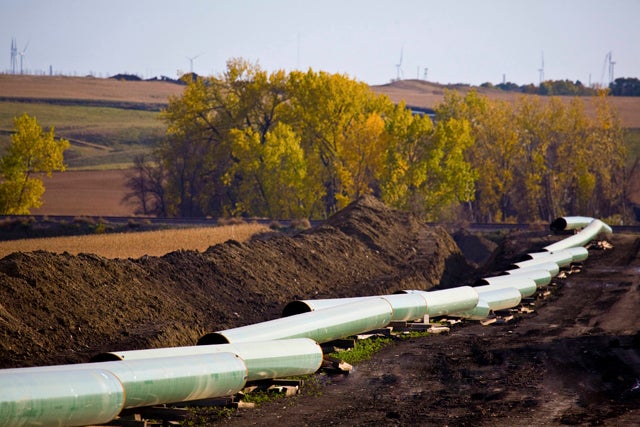Last week, the House of Representatives passed the Northern Route Approval Act, introduced by Representative Lee Terry (R–NE), which would authorize the construction of Keystone XL Pipeline.
It has been five years since TransCanada announced the Keystone XL expansion project, but we’re still without a pipeline and the jobs and the energy that come with it because no presidential permit for construction has been authorized. Even more infuriating is the fact that the U.S. has already granted one of those permits for the Keystone Pipeline System.
The Keystone XL Pipeline is just a portion of the larger Keystone Pipeline System. You can view a map of the entire system here. Any pipeline that crosses over the U.S.–Canadian border requires a review by the Department of State (DOS) and a presidential permit. Unbeknownst to many is the fact that the U.S. has already granted one of those presidential permits for the Keystone Pipeline System.
Phase I of the system begins at Hardisty, Alberta, and transports crude oil to Wood River and Patoka, Illinois. The pipeline, in operation today, runs through North Dakota, South Dakota, Nebraska, Kansas, Missouri, and Illinois. These are the same states the northern route of the Keystone XL Pipeline would travel through (in addition to Montana).
For phase I of the Keystone Pipeline System, TransCanada filed an application with the DOS in April 2006, and the DOS began an environmental review in September 2006. TransCanada received its presidential permit for phase I in March 2008. From beginning to end, the process took 23 months.
Despite two environmental reviews from the DOS concluding that Keystone XL (phase 4 of the Keystone Pipeline System) was as environmentally safe, we are in the fifth year of the project’s review. Not only is this unnecessary delay preventing job creation and increased energy supply; it’s also setting a dangerous precedent that may cause foreign companies to avoid conducting business with the U.S. in an election year.
A top executive for TransCanada, Alex Pourbaix, recently indicated that the onerous delay is not about safety but “trying to stop the development of the oilsands by choking off the pipeline projects and I think we all have to remember that.… As we go forward on new projects we’re obviously going to take that into account.”
In other words, if the U.S. doesn’t want Canada’s oil and the jobs and economic growth that come with it, they’ll take their business elsewhere.
Allowing access to easy energy imports from Canada is a no-brainer and, with respect to Canadian oil, has been done before within the same pipeline system. This is why Heritage has said from the beginning that Congress should go around the presidential permit and give the project the green light.
